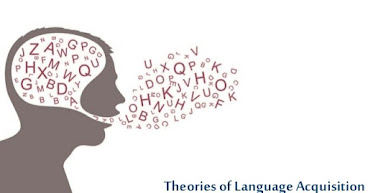Blog Response #3
Processing language and thought through the lens of Chomsky, Bruner, and Bernstein
The assigned readings touched on the perspectives about language and thought through the eyes of Bruner, Chomsky, and Bernstein. Bruner and Chomsky's work on understanding language and thought are valuable for a comprehensive view of language and cognitive development. Similar to other theorists (Vygotsky and Piaget), Chomsky and Bruner agree with the idea that language plays an important role in influencing a child’s development. I understood from previous readings how Vygotsky viewed language from an interactionist perspective. His view is that language contains biological and social components. Piaget, on the other hand, argues that language is not biological and that children must first be cognitively mature and their ability to learn the language is through assimilation and accommodation. What's more, Chomsky’s perspective is unique, and he views the process of language and thought from a Nativist lens and argues that language and thought are independent, and language is an innate ability. Chomsky coins this capability as a “language acquisition device” and through this device, children learn languages instinctively without any formal instruction. In this realm, Chomsky also posits that there are universal grammar rules that all humans share. Bruner also shared a similar view with Vygotsky about how social interaction contributes to language development. However, contrary to Chomsky and Piaget, Bruner argued that language was neither innate nor a developmental process.
Upon reading Wood Chapter 5, I connected to Bernstein’s notion on how a child’s socioeconomic background impacts their school performance and their uses and forms of language development. He argued that "children from middle-class homes are likely to be socialized, controlled, and talked to in different ways from working-class children” (Wood, 2007, pg. 111). Essentially, Bernstein posits the variations in language codes “lead children to different world views; aspirations, attitudes, and learning aptitudes and eventually to different levels of school performance” (Wood, 2007, pg. 111). I find his analysis of restricted and detailed code interesting, and I see the relevance to his concepts from my own experiences. From what I understand, the code doesn't contain a lot of contexts. Similar to its name, this form of language must “elaborate” everything because the environment that it’s used in doesn’t allow the speaker to condense. Therefore, the speaker needs to speak thoroughly for the listener to understand the context of the conversation. Looking back on my own experience, I would assume that I have used this code in a new environment or around people I just met. Restricted codes on the other hand provide context, additional background, and prior knowledge. The setting where I would normally use restrictive codes would be around my friends or individuals with whom I have shared experiences. Over the course of this week, I challenged myself to identify how I used these codes in my everyday life. Over the course of the week, I challenged myself to identify how I use these codes in my daily life. Luckily, I found something out this weekend while I was in Washington DC for business. I attended the National Institute of Black Child Development conference this weekend and had the pleasure of meeting new people during the workshop and throughout the conference. Yesterday, I attended a workshop and the facilitator asked us to break off into groups and talk about ourselves and our work-related experiences. I met a young lady and started sharing my experience as a director at the ECE Center and the company I work for. Although most of the attendees had a direct working relationship with the children, the young lady was not familiar with my job duties and the company I worked for. She seemed curious about my work and asked about my roles and responsibilities as a director and the background of the company I work for. In that case, I began communicating in an elaborate code to provide more context and details about my work. After my conversation with the first lady, I met another woman from Dallas who is also the director of the ECE Center. During our conversation, I noticed that compared to the first conversation, I didn't need to elaborate as much about the details of my work. Essentially, I noticed how we both communicated in restrictive codes because she and I both had prior knowledge of our work, so additional context wasn’t needed.
Reference:
Wood, D. (2007). How children think and learn: The social contexts of cognitive development. Blackwell.

Comments
Post a Comment